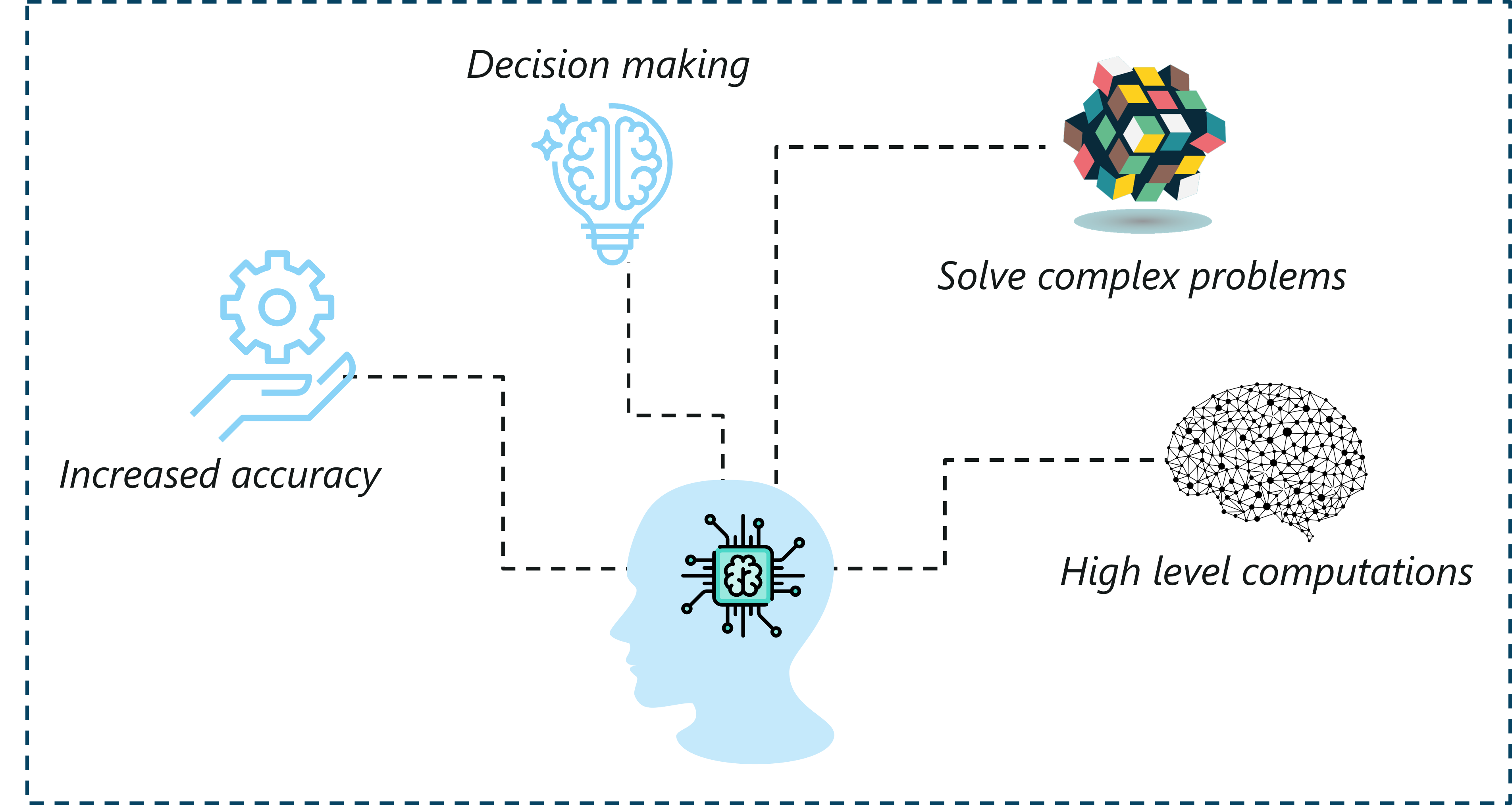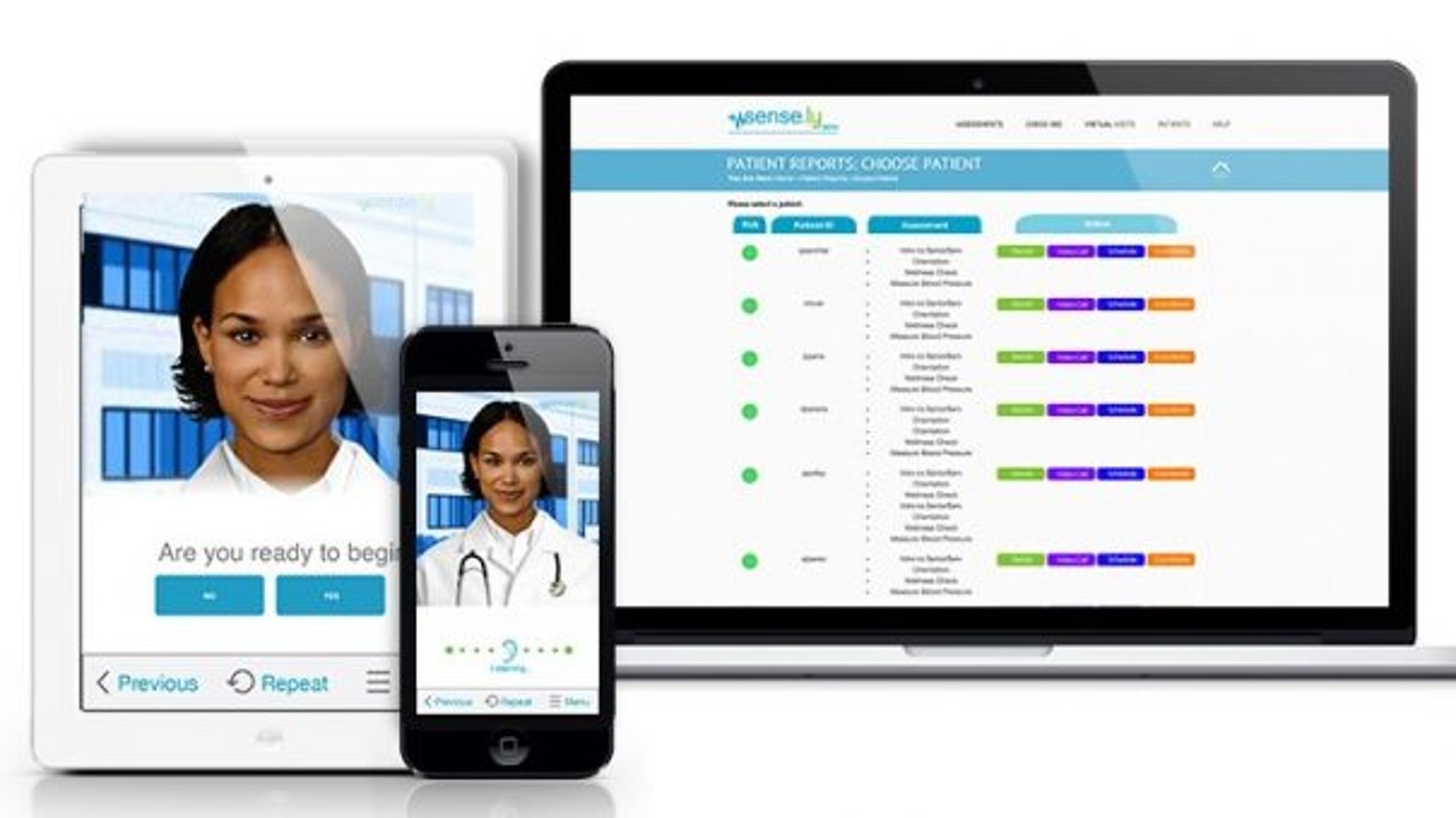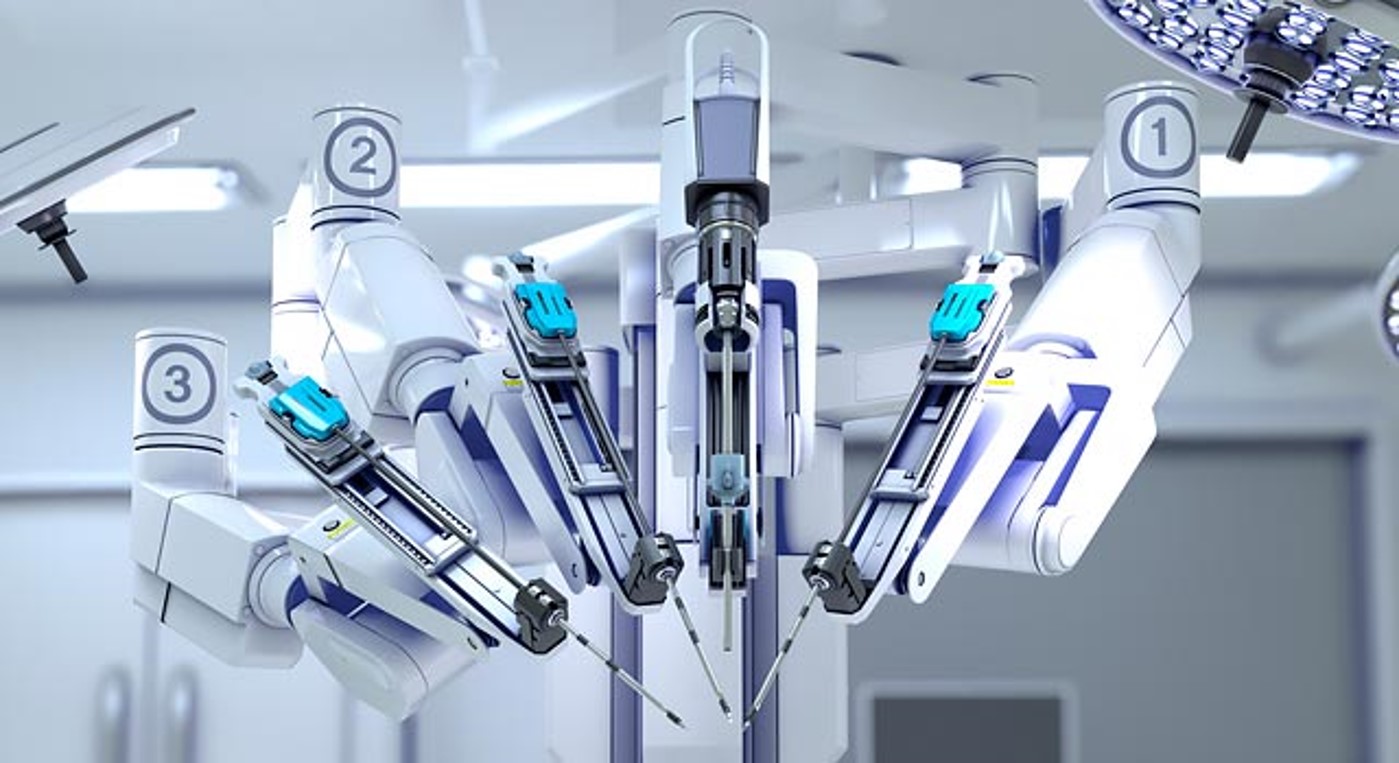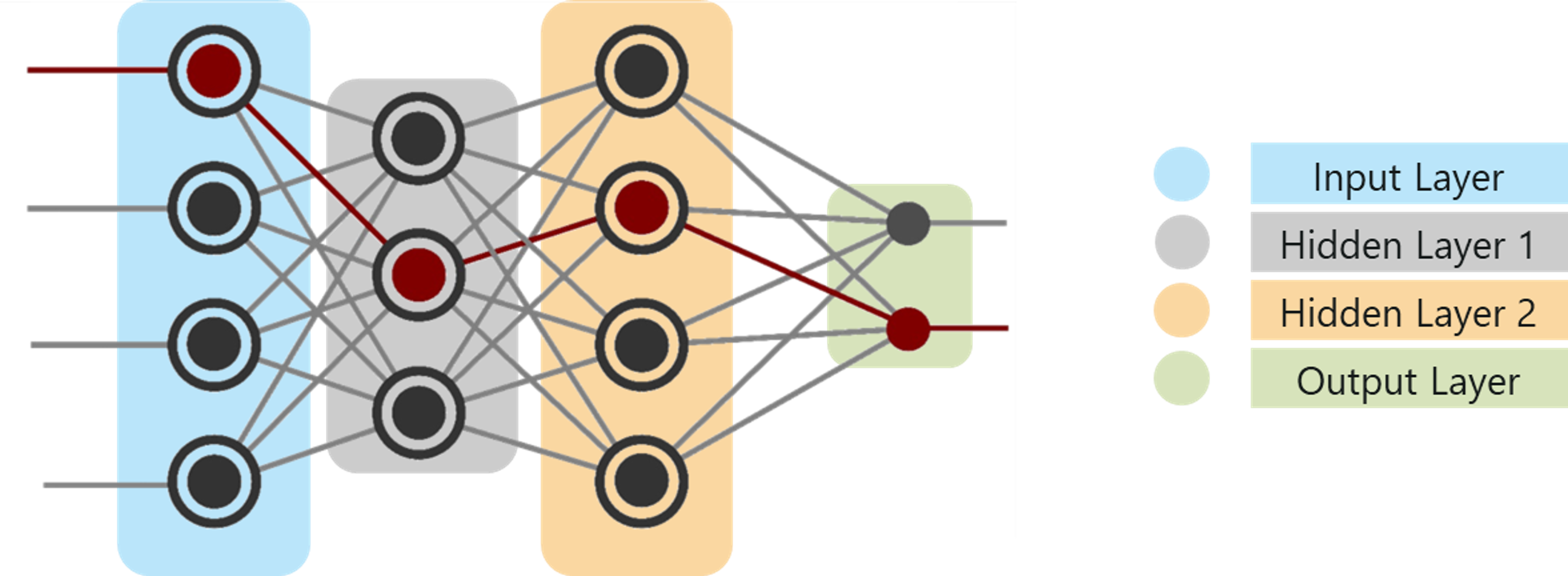Despite the fact that Artificial Intelligence invokes fear in most of us, it is benefiting us in numerous ways. Artificial Intelligence In Healthcare is revolutionizing the medical industry by providing a helping hand. This blog will help you understand the positive impact of Artificial Intelligence in the healthcare domain.
To get in-depth knowledge of Artificial Intelligence & Machine Learning, you can enroll for live Machine Learning Engineer Master Program by Edureka with 24/7 support and lifetime access.
Here’s a list of topics that I’ll be covering in this article:
- What Is Artificial Intelligence?
- Artificial Intelligence In Healthcare
- What Is Machine Learning?
- What Is Deep Learning?
- Hands-On
What Is Artificial Intelligence?
Artificial Intelligence is a process of using Machine Learning, Deep Learning, Natural language Processing, and many other techniques to build artificially intelligent models that can perform high-level computations and solve complex problems.

What Is Artificial Intelligence – Artificial Intelligence In Healthcare – Edureka
To learn more about Artificial Intelligence, you can go through the following full course video recorded by our AI experts:
Artificial Intelligence Full Course | Edureka
Now let’s understand how AI is impacting healthcare.
Artificial Intelligence In Healthcare
Since the introduction of Artificial Intelligence in the 1950s, it has been impacting various domains including marketing, finance, the gaming industry, and even the musical arts. However, the largest impact of Artificial Intelligence is in the field of Healthcare. According to the latest report by PwC, AI will contribute an additional $15.7 trillion to the world economy by 2030 and the greatest impact will be in the field of healthcare.
In the below section you will understand how AI is being used to solve real-world use cases.
Artificial Intelligence In Data Management
Artificial Intelligence is benefiting healthcare organizations by implementing cognitive technology to unwind a huge amount of medical records and perform power diagnosis. Take, for example, Nuance the prediction service provider that uses Artificial Intelligence and Machine Learning to prescient the intent of users.

Artificial Intelligence In Managing Medical Data
By implementing Nuance in an organization’s workflow one can develop a personalized user experience that enables a company to take better actions that enhance the customer’s experience and overall benefits business.
Here’s a list of key features of Nuance:
- Service acceleration: Suggest the best next step to ensure that the consumer’s needs are met.
- Call deflection: Minimize the volume of inbound call volumes and lower the expenses by anticipating the customers intent and diverting customers to other online engagements.
- Churn reduction: Using Machine Learning and Natural Language Processing techniques to predict the behavior of leads that may be close to invalidating their service based on their history, searches, sentiments, etc, and take appropriate action to avoid such service cancellations

Artificial Intelligence In Managing Medical Data – Nuance AI
- Automate tedious tasks: Eradicate the monotonous task of calling users by implementing an automated system that sends notification via SMS or email and uses AI-based chatbots that make things simpler.
Now let’s discuss how Artificial Intelligence is using Deep Learning techniques to improve medical diagnosis.
Artificial Intelligence In Medical Diagnosis
“Medical imaging and diagnosis powered by AI should witness more than 40% growth to surpass USD 2.5 billion by 2024.” – Global Market Insights. With the help of Neural Networks and Deep learning models, Artificial Intelligence is revolutionizing the image diagnosis field in medicine. It has taken over the complex analysis of MRI scans and made it a simpler process.

Artificial Intelligence In Medical Diagnosis
- MRI scans are difficult to analyze due to the amount of information they contain. A normal MRI analysis takes several hours and researchers trying to formulate an outcome from large data sets, wait for hours for a computer to generate the scans.
- Large and complex data sets can be analyzed with the help of neural networks and this is exactly what a team of researchers implemented in MIT. They developed a neural network called VoxelMorph that was trained on a data set of approx 7000 MRI scans.
- A neural network functions by inputting data at one end which undergoes transformation throughout the network until the final desired output is formed. Neural networks work on the principle of weights and bias.
If you want to learn more about neural networks, you can go through this Deep Learning: Perceptron Learning Algorithm blog.
VoxelMorph succeeded in beating conventional MRI analysis methods. The neural networks took seconds to perform MRI analysis, the same analysis that takes hours for a conventional MRI program.
Artificial Intelligence In Early Detection
Artificial Intelligence has played a key role in the early prediction of medical conditions such as heart attacks. Many AI-based wearable health trackers have been developed to monitor the health of a person and display warnings when the device collects something unusual or unlikely. Examples of such wearables include Fitbit, Apple watch, and many others.

Artificial Intelligence In Early Prediction
‘Precaution is always better than cure’, this is the motto behind the latest release of the Apple watch.
- Apple used Artificial Intelligence to build a watch that monitors an individual’s health.
- This watch collects data such as a person’s heart rate, sleep cycle, breathing rate, activity level, blood pressure, etc. and keeps a record of these measures 24/7.
- This collected data is then processed and analyzed by using Machine Learning and Deep learning algorithms to build a model that predicts the risk of a heart attack.
Thanks to the Apple watch, an individual named Scott Killian saved his life.
Artificial Intelligence In Medical Assistance
As the need for medical assistance has grown, the development of AI-based virtual nurses has increased. According to a recent survey, Virtual nursing assistants corresponds to the maximum near-term value of USD 20 billion by 2027.
Sensely is one such example of a virtual nurse that implements Natural Language Processing, speech recognition, Machine Learning and wireless integration with medical devices such as blood pressure cuffs to provide medical assistance to patients.

Artificial Intelligence In Medical Assistance
Here’s a list of key features that the virtual nurse, Sensely provides:
- Self-care
- Clinical advice
- Scheduling an appointment
- Nurse Line
- ER Direction
With such revolutions in the field of healthcare, it is clear that despite the risks and the so-called ‘threats’, Artificial Intelligence is benefiting us in many ways.
Artificial Intelligence In Decision Making
Artificial Intelligence has played a major role in decision making. Not only in the healthcare industry but AI has also improved businesses by studying customer needs and evaluating any potential risks.
A powerful use case of Artificial Intelligence in decision making is the use of surgical robots that can minimize errors and variations and eventually help in increasing the efficiency of surgeons. One such surgical robot is the Da Vinci, quite aptly named, allows professional surgeons to implement complex surgeries with better flexibility and control than conventional approaches.

Artificial Intelligence In Decision Making
Key features of the Da Vinci include:
- Aiding surgeons with an advanced set of instruments
- Translating the surgeon’s hand movements at the console in real time
- Producing clear and magnified, 3D high-definition image of the surgical area
Surgical robots not only assist in decision-making processes, but they also improve the overall performance by increasing accuracy and efficiency.
So those were a couple of real-world applications of Artificial Intelligence in healthcare. Throughout the blog, I’ve mentioned two very important fields of AI, Machine Learning and Deep Learning. Let’s understand what exactly these terms mean.
What Is Machine Learning?
Machine Learning is the process of feeding machines tons of data so that they can interpret, process and analyze this data in order to produce actionable insights that benefit an organization.

What Is Machine Learning?
To learn more about Machine Learning you can go through the following blogs:
- What is Machine Learning? Machine Learning For Beginners
- Introduction To Machine Learning: All You Need To Know About Machine Learning
- Machine Learning Tutorial for Beginners
- Machine Learning Algorithms
A more advanced concept of Machine Learning is Deep Learning. Let’s understand what Deep Learning is.
What Is Deep Learning?
Deep Learning is a more advanced field of Machine Learning that uses the concept of Neural Networks to solve more convoluted problems that require high dimensional data and automated feature extraction.

What Is Deep Learning?
To learn more about Deep Learning, you can go through the following blogs:
- Deep Learning Tutorial: Artificial Intelligence Using Deep Learning
- What is Deep Learning? Getting Started With Deep Learning
- Deep Learning with Python: Beginners Guide to Deep Learning
- Neural Network Tutorial – Multi-Layer Perceptron
- Backpropagation – Algorithm For Training A Neural Network
Now let’s look at how a use case of Artificial Intelligence in healthcare can be implemented by using Deep Learning concepts.
Deep Learning With Python
A short disclaimer before we get into the hands-on part:
I’ll be using Python to run this demo, so if you don’t know the language, here are a couple of blogs to get you started with Python Programming:
- Python Tutorial – A Complete Guide to Learn Python Programming
- How to Learn Python 3 from Scratch – A Beginners Guide
- Python Programming Language – Headstart With Python Basics
- A Beginners Guide To Python Functions
Problem Statement: To Study the Breast Cancer Wisconsin (Diagnostic) Data Set and model a Neural Network classifier that predicts the stage of Breast Cancer as either M (Malignant) or B (Benign).
Data Set Description: The data set contains descriptive information about the cell nucleus present in a sample. It contains around 32 attributes/ features that will help in classifying whether a particular sample is cancerous or not. You can find the data set here.
Logic: To build a binary neural network that can classify a cell sample correctly as either cancerous or not. The output produced will be a categorical variable that contains two values:
- Malignant – Cancerous cells
- Benign – Non-cancerous cells
Now that you know the logic behind the problem statement, it’s time to put on your detective glasses and start coding.
Step 1: Import the required packages
|
1
2
3
4
5
6
7
8
9
10
11
12
13
|
# Linear algebraimport numpy as np# Data processingimport pandas as pdimport matplotlib as mplimport matplotlib.pyplot as pltimport matplotlib.pyplot as plt2from sklearn import preprocessingfrom subprocess import check_output |
Step 2: Read the input data
|
1
2
3
4
5
6
7
8
9
10
11
12
13
14
15
|
# Import the data setdata = pd.read_csv('C://Users//NeelTemp//Desktop//data.csv')#Display the first few observations in the data setprint(data.head()) id diagnosis ... fractal_dimension_worst Unnamed: 320 842302 M ... 0.11890 NaN1 842517 M ... 0.08902 NaN2 84300903 M ... 0.08758 NaN3 84348301 M ... 0.17300 NaN4 84358402 M ... 0.07678 NaN[5 rows x 33 columns] |
Step 3: Data Processing
|
1
2
3
4
5
6
7
8
9
10
11
12
13
14
15
|
# Cleaning and modifying the datadata = data.drop('id',axis=1)data = data.drop('Unnamed: 32',axis=1)# Mapping Benign to 0 and Malignant to 1data['diagnosis'] = data['diagnosis'].map({'M':1,'B':0})# Scaling the datasetdatas = pd.DataFrame(preprocessing.scale(data.iloc[:,1:32]))datas.columns = list(data.iloc[:,1:32].columns)datas['diagnosis'] = data['diagnosis']# Creating the high dimensional feature space Xdata_drop = datas.drop('diagnosis',axis=1)X = data_drop.values |
Step 4: Building a neural network
|
1
2
3
4
5
6
7
8
9
10
11
12
13
14
|
# Create a feed forward neural network with 3 hidden layersfrom keras.models import Sequential, Modelfrom keras.layers import Dense, Dropout, Inputfrom keras.optimizers import SGDmodel = Sequential()model.add(Dense(128,activation="relu",input_dim = np.shape(X)[1]))model.add(Dropout(0.25))model.add(Dense(32, activation='relu'))model.add(Dropout(0.25))model.add(Dense(32, activation='relu'))model.add(Dense(1, activation='sigmoid'))sgd = SGD(lr=0.01, decay=1e-6, momentum=0.9, nesterov=True)model.compile(loss='binary_crossentropy', optimizer=sgd, metrics=['accuracy']) |
Step 5: Data Splicing and Cross Validation
|
1
2
3
4
5
6
7
8
9
10
11
12
13
|
# Fit and test the model by randomly splitting it# 67% of the data for training and 33% of the data for validationmodel.fit(X, datas['diagnosis'], batch_size=5, epochs=10,validation_split=0.33)# Cross validation analysisfrom sklearn.model_selection import StratifiedKFold# K fold cross validation (k=2)k = 2kfold = StratifiedKFold(n_splits=2, shuffle=True, random_state=seed)cvscores = []Y = datas['diagnosis']for train, test in kfold.split(X, Y): |
Step 6: Running the model
|
1
2
3
4
5
6
7
8
9
10
11
12
13
14
15
16
17
18
19
20
|
# Fit the modelmodel.fit(X[train], Y[train], epochs=10, batch_size=10, verbose=0)Train on 381 samples, validate on 188 samplesEpoch 1/105/381 [..............................] - ETA: 2:39 - loss: 0.5185 - acc: 0.800045/381 [==>...........................] - ETA: 16s - loss: 0.6274 - acc: 0.6444100/381 [======>.......................] - ETA: 6s - loss: 0.5755 - acc: 0.7100155/381 [===========>..................] - ETA: 3s - loss: 0.4560 - acc: 0.7871215/381 [===============>..............] - ETA: 1s - loss: 0.3723 - acc: 0.8326260/381 [===================>..........] - ETA: 1s - loss: 0.3404 - acc: 0.8538305/381 [=======================>......] - ETA: 0s - loss: 0.3252 - acc: 0.8623381/381 [==============================] - 3s 7ms/step - loss: 0.2802 - acc: 0.8845 - val_loss: 0.0870 - val_acc: 0.9628Epoch 2/105/381 [..............................] - ETA: 0s - loss: 0.0647 - acc: 1.0000165/381 [===========>..................] - ETA: 0s - loss: 0.0966 - acc: 0.9758381/381 [==============================] - 0s 314us/step - loss: 0.0944 - acc: 0.9659 - val_loss: 0.0497 - val_acc: 0.9894 |
Step 7: Model Evaluation
|
1
2
3
4
5
6
7
8
9
10
11
12
13
|
# evaluate the modelscores = model.evaluate(X[test], Y[test], verbose=0)# Print scores from each cross validation runprint("%s: %.2f%%" % (model.metrics_names[1], scores[1]*100))acc: 97.89%acc: 97.89%cvscores.append(scores[1] * 100)print("%d-fold cross validation accuracy - %.2f%% (+/- %.2f%%)" % (k,np.mean(cvscores), np.std(cvscores)))2-fold cross validation accuracy - 97.89% (+/- 0.00%) |
So as you can see the Neural Network gives us an accuracy of 97.89%, which is a pretty good score. If you wish to improve the model any further, can perform parameter tuning and optimization techniques such as the drop-off method with a more efficient value.
If you’re still curious about Artificial Intelligence, here are a couple of blogs that might interest you:
- Artificial Intelligence – What It Is And How Is It Useful?
- Artificial Intelligence Tutorial: All you need to know about AI
- AI Applications: Top 10 Real World Artificial Intelligence Applications
- How to Become an Artificial Intelligence Engineer? A Road map to the Future
So with this, we come to an end of this Artificial Intelligence In Healthcare blog. Stay tuned for more blogs on the most trending technologies.
If you wish to enroll for a complete course on Artificial Intelligence and Machine Learning, Edureka has a specially curated Machine Learning Engineer Master Program that will make you proficient in techniques like Supervised Learning, Unsupervised Learning, and Natural Language Processing. It includes training on the latest advancements and technical approaches in Artificial Intelligence & Machine Learning such as Deep Learning, Graphical Models and Reinforcement Learning.


